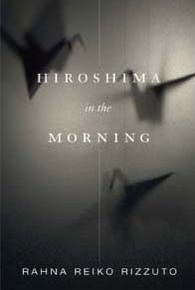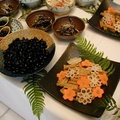The media are reporting on how Muslim Americans are braced for attacks this weekend, because of the 9/11 anniversary. I know what that’s like, unfortunately, though not on the scale of violence and hatred Muslims are facing today.
It’s a sad commentary on the state of American “patriotism” that Japanese Americans still get nervous every December 7 because we grew up with racial slurs of “go home, Japs” and “Remember Pearl Harbor!”
Such are the deep emotional scars that form after a national trauma, and ethnicity and religion add layers of fear and complexity. It’s understandable in a way, but also unjust—Japanese Americans had nothing to do with Japan’s attack on Pearl Harbor any more than German Americans had to do with the blitzkrieg of London. And Muslim Americans certainly had nothing to do with the awful attacks of 9/11. It’s too bad that so many Americans can’t understand such a basic fact and separate nationality from ethnicity, faith from fanaticism.
These schisms are bouncing around my head along with the powerful writing of author Rahna Reiko Rizzuto, whose terrific second book, “Hiroshima in the Morning” has just been published by the Feminist Press. (Hiroshima in the Morning, Book Trailer >>)
The book on its surface is a simple idea: A memoir of Rizzuto’s 2001 trip to Japan, paid for by a fellowship from the National Endowment for the Arts to research the stories of Hiroshima bomb survivors, a group that shrinks each year as the generation passes away, in the city where her own family roots are planted. Rizzuto lived there for eight months to find people to interview, so she could write her second novel.
Instead, she came out of the experience with her life changed profoundly, and this memoir came first before the novel, which is finished but incubating a bit before she sends it to editors under the name “Shadow Child.”
Until the novel comes out, readers can devour “Hiroshima in the Morning” and marvel at Rizzuto’s craft and literary approach to telling non-fiction stories, as well as her brave willingness to expose the emotional evolution she undertakes by the end of her fellowship.
Her ability to write literature as if it were non-fiction is what set Rizzuto’s first novel, “Why She Left Us,” which won the American Book Award upon its release in 2001, apart from other books based on the Japanese American internment.
Rizzuto, who is half-Japanese, based that first book in part on her mother’s experience of being interned at Camp Amache in Colorado during World War II. But she interviewed many former internees to collect observations, details, relationships, experiences and story lines that she wove together into fiction that rang with the power of truth.
She wrote the novel in the different perspectives and voices of its main characters, and jumped through time and space in ways that masterfully held the reader on track, following the devastating legacy of internment on generations of one family. It was unorthodox, artsy and literary, and a riveting read.
I look forward to seeing how she uses the research in Hiroshima as fuel for her fiction, especially after reading “Hiroshima in the Morning.”
In this new book, Rizzuto brings her writerly talent to even the most straightforward factual observations during her 2001 trip:
“The clouds have gone mad,” she describes in one passage. “Against the bright blue sky, clouds of every shape and size vie for my attention. There are streaming bubbles, cellophane lakes of haze, proud feathers, and the sharp, renaissance boils of cumulus—these last just the caps in a field of mushrooms, just the ghosts of motionless anger and old pain.”
And that’s her non-fiction writing! This is just the way her brain works, I think. She doesn’t observe the world in plain perspectives. It’s almost as if everything around her is alive and bulging with meaning, and she’s there to pluck the fruit and present it to us as a salad of words and images and emotions and oh, yeah, facts.
The story arc of “Hiroshima in the Morning” follows several main trajectories.
The first, and obvious one, is her struggle to fit in as an American in Japan (oddly, she doesn’t address any issues about being hapa, or mixed-race, in the ethnic homogeneity around her… it’s as if just her mere American-ness is enough to place her apart from everyone else in the story, at least until her family comes to visit). The beginning of the book focuses on how Japan is foreign, and how she’s a foreigner in Japan.
She moves on quickly and her initial struggles are forgotten as she finds an apartment in Hiroshima with the help of friends she’s been referred to, and Rizzuto eases into the second narrative, interviewing hibakusha, the atomic bomb survivors. But she finds that she’s not satisfied by the canned, too-rehearsed mythology of the survivors’ much-chronicled stories. They’re emotionally empty recitations, and by reading Rizzuto, we get to know that she writes for the emotional core of a story, not just the surface factoids.
The third storyline is Rizzuto’s strained relationship with her college-sweetheart husband, who is in New York City, bravely being Mister Mom for the couple’s two sons. Over a series of e-mails and phone calls, their relationship frays and tears, while Rizzuto struggles with her identity as a mother and spouse, and begins to questions her role in her family’s life as well as her role as an artist spending six months on a grant.
Her relationship with the hibakusha as well as her family ties switch gears when the news of the 9/11 attacks breaks in Japan. Her frantic concern for her family rekindle her long-distance relationship with her husband and kids. And, the attack on America jogs the logjam with the hibakusha, and the survivors suddenly pour forth with personal, emotionally wrenching memories.
Throughout the narrative of her time in Japan, Rizzuto swirls in recurring motifs such as dreams, memories and hallucinations of her mother, who’s suffering from Alzheimer’s, and her growing friendships in Hiroshima. The book ultimately is about motherhood and family relationships, and the personal, fictionalized nature of memories.
Just describing the book doesn’t do it justice. Rizzuto is such an elegant, and at the same time, intellectually rigorous writer that you have to read her prose to appreciate its power and grace. (You can read a short excerpt, the beginning of the book, on her website.)
The way she lays out her emotional journey openly and unashamedly and writes transparently about her personal struggles in “Hiroshima in the Morning” is downright heroic.
*This article was originally published in “NIKKEI VIEW: The Asian American Blog” on September 11, 2010.
© 2010 Gil Asakawa







